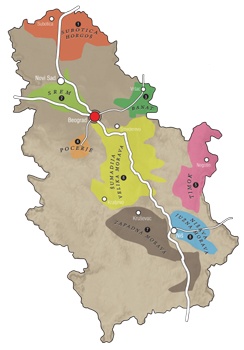Subscribe to news
Next FICB events
Wine-discovery tour sponsored by F.I.C.B.in Italy (Piedmont)
22 May - 26 MayWINE-DISCOVERY TOUR SPONSORED BY F.I.C.B. IN JAPAN : MAY 18-24, 2026
18 May 2026 - 24 May 2026

Like in most of its neighboring countries, wine growing in Serbia dates back to the Roman times. It had a time of glory under the Nemanjic dynasty who promoted it at the turn of the XIIth century. Then after having been devastated by the phylloxera in the XIXth century, it had to wait for a renewal at the turn of the XXIst century, with the resurrection of indigenous products such as the famous Bermet (Vermouth) from Stremski Karlovci.
Surface : 70 000 ha
Production : 20 000 hl
Terroir
Main wine regions
There are 9 wine regions of which the main are:
Legislation
A programme is in progress with Italy to align the Serbian legislation with the E.U.
Sites
Subscribe to news
Next FICB events